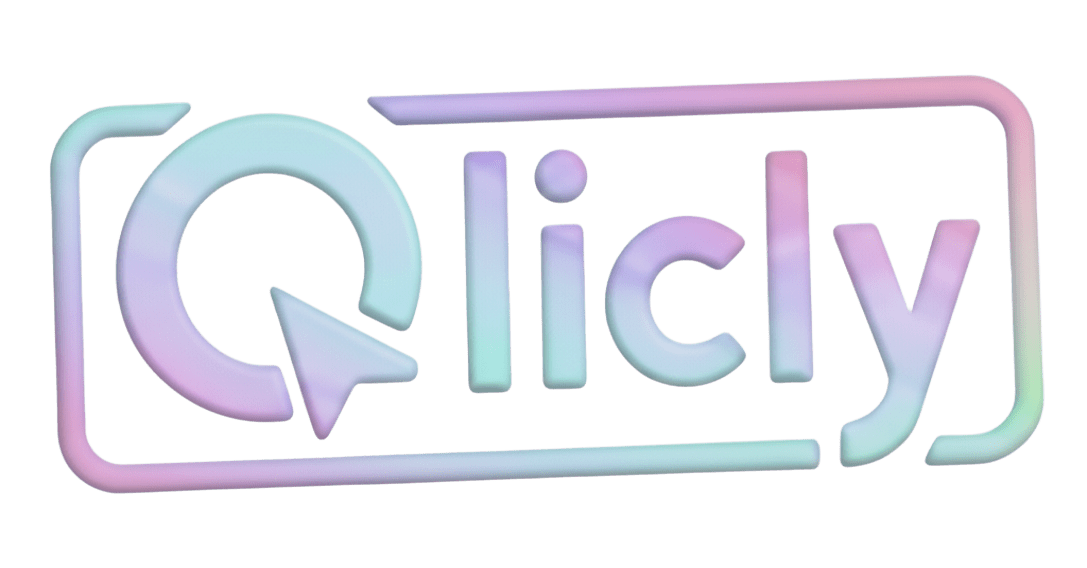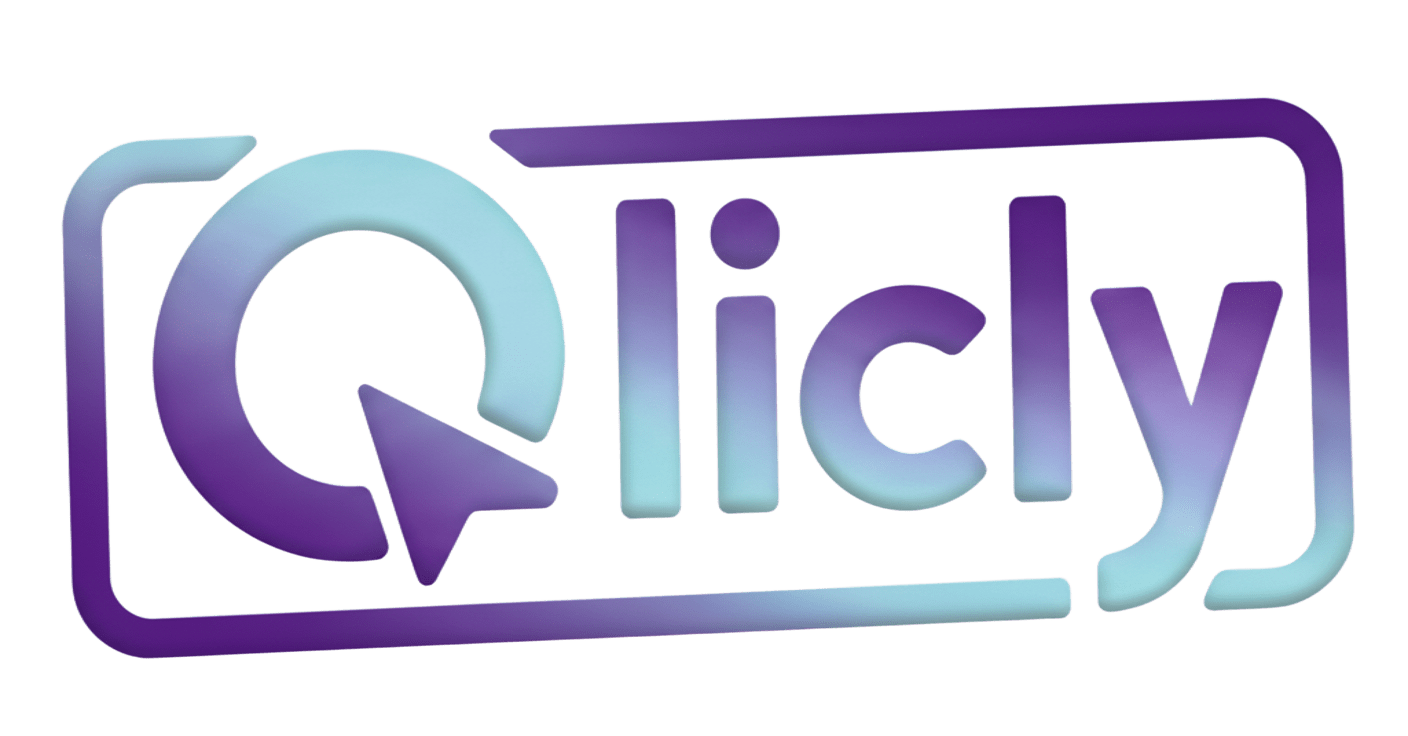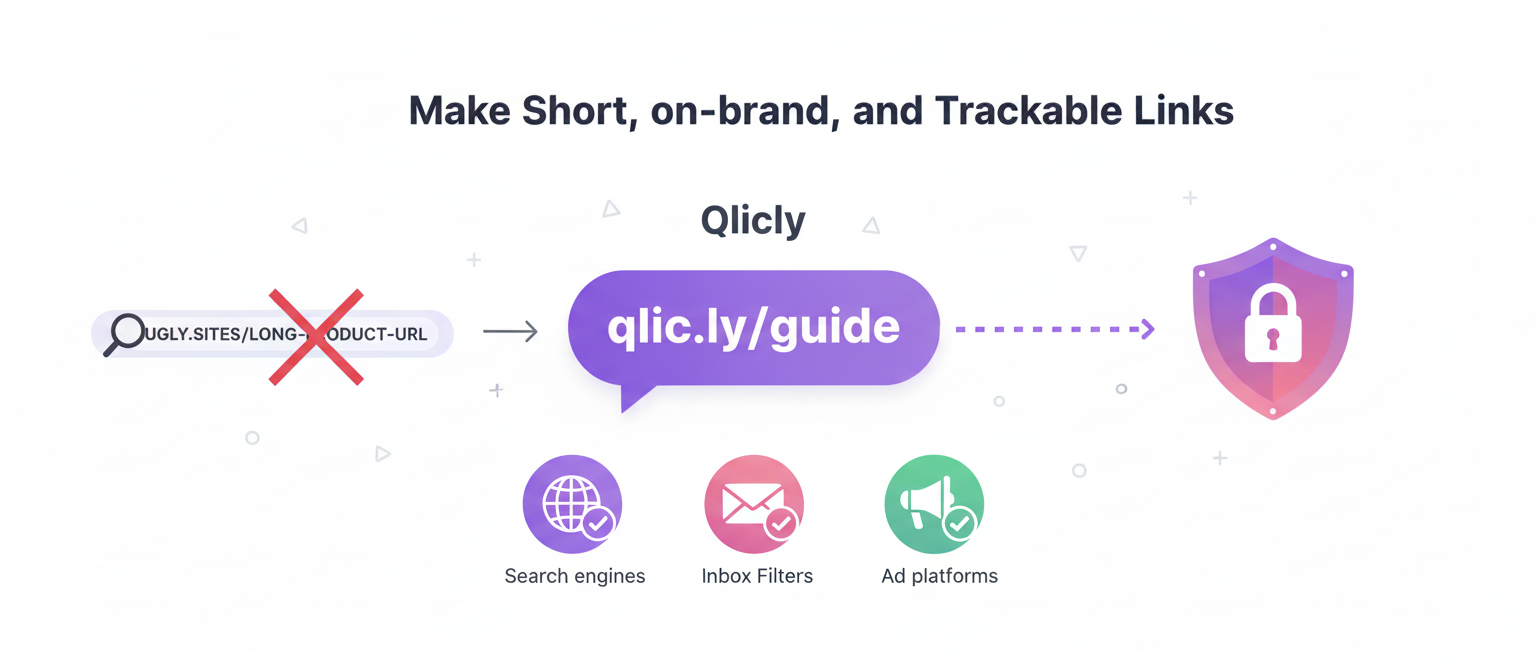
Short links aren’t just for saving characters. In 2025, they are the connective tissue of modern marketing—cleaning up your creative, stitching together cross‑channel attribution, and opening doors to higher conversion journeys on mobile. When you brand those short links and pair them with smart routing, deep linking, and UTMs, they become a measurable lever for CTR, deliverability, and ROI.
In this guide, we’ll break down where short links fit across your stack (ads, email, SMS, social, QR/CTV, affiliates), why a branded domain matters, and exactly how to implement a durable link strategy with Qlicly—including examples like https://qlic.ly/spring-offer and https://qlic.ly/app-demo. We’ll also anchor recommendations to recent research and platform guidance.
Why Branding the Short Link Matters
Trust and CTR. People click what they recognize. Large‑scale datasets show that branded short domains drive significantly more engagement—Bitly’s analysis reported up to a 34% CTR lift, while Rebrandly’s controlled experiments found up to 39% more clicks for branded links versus generic short URLs. [1][2]
Deliverability & security cues. Email and SMS filters now scrutinize the domains inside your messages. Gmail and Yahoo require proper authentication (SPF, DKIM, DMARC) for bulk senders; aligning your tracking/redirect domain with your brand helps reputation scoring. Messaging carriers and major CPaaS providers also discourage public/shared shorteners for A2P traffic—favor a branded domain. [12][13][9][10][11]
Brand consistency. Every time a link is shared, your hostname is front‑and‑center. That compounds familiar recognition across paid, owned, and earned channels over time.
Example: Instead of a shared shortener like bit.ly/abc123, use https://qlic.ly/abc123 (or your own connected domain in Qlicly) to reinforce trust and streamline analytics.
Fixing Attribution with UTMs (Without Ugly Links)
UTM parameters are the universal language of campaign tracking. They label source, medium, campaign, and more—so analytics shows exactly what’s working. [3][4]
- Standardize your taxonomy. Keep everything lowercase, avoid spaces, and document naming rules (e.g.,
utm_source=instagram,utm_medium=social,utm_campaign=fall‑launch). - Never tag internal links. UTMs are for external traffic only. [4]
- Shorten for distribution. Long tagged URLs look messy in creative and DMs. Build the full destination with UTMs, then publish the short version, e.g.,
https://qlic.ly/launch→ resolves to your UTM’d landing URL. [4]
Example: Raw URL with UTMs: https://yourbrand.com/pricing?utm_source=linkedin&utm_medium=cpc&utm_campaign=q4‑pricing‑promo&utm_content=ad‑a
Public‑facing short link: https://qlic.ly/pricing‑q4
Why this matters now: Search still sends the lion’s share of web referrals and social platforms keep “darkening” referral strings. Clean UTM governance—delivered via short links—protects your measurement. [16]
Short Links for SMS & Email: Clarity, Cost, and Compliance
SMS character budget. Standard SMS segments max out at 160 GSM‑7 characters; longer texts are split and billed per segment. Keeping URLs short helps you fit more message (and reduce per‑message cost). [7][8]
A2P filtering. Carrier guidance and CPaaS documentation caution against public URL shorteners in bulk messaging. Use your own branded domain to minimize filtering risk and maintain recourse. [9][10][11]
Email authentication. Starting in 2024, Gmail/Yahoo require SPF, DKIM, and DMARC for bulk senders. Aligning your click/redirect domain with your brand can support reputation and reduce “unknown” redirect chains. [12][13]
Example SMS copy (146 chars): “Your 20% off ends tonight. Grab it here → qlic.ly/tonight‑20 Reply STOP to opt out.”
QR Codes, CTV, and Offline‑to‑Online
QR codes have become a mainstream bridge between offline and mobile. Insider Intelligence estimates 97.8M US consumers will use smartphone QR scanners in 2024, growing to 102.5M in 2025—fueling shoppable CTV and omnichannel experiences. [5]
Pro tip: Pair your printed or TV QR with the same branded short domain you use online—https://qlic.ly/event—so the host name stays familiar across channels.
Deep Linking to Apps (and Why It Lifts Conversion)
When a user taps your link on mobile, the best next step is often inside your app (not just your mobile site). Deep links route the click into an in‑app product page (or to the app store if not installed), preserving context. Recent analyses show deep‑linked journeys can deliver up to 6× higher conversion. [6]
Example: https://qlic.ly/app‑demo → opens the app directly to a product detail; otherwise routes to iOS/Android store.
What “Smart Short Links” Look Like in Practice
Modern link platforms let one short URL serve multiple, targeted experiences while keeping analytics centralized:
- Device/geo/language routing. Send iOS to an App Store page, Android to Google Play, desktop to a web landing page; route by country or language with a single link. [14]
- Deep links & fallback logic. If the app is installed, open to the right screen; otherwise, fall back to the right store or web page. [14]
- A/B destination testing. Split traffic between landing page variants without changing the ad or creative. [14]
- Pixels & events. Attach tracking pixels (where permitted) and log link‑level events to quantify placement‑level lift. [14]
- Campaigns & channels. Group links to roll up performance by initiative or channel for cleaner reporting. [14]
Make Every Preview Count: Social Cards & Meta Data
Short links get more clicks when the destination renders an attractive preview. Ensure your landing pages include Open Graph and Twitter (X) Card metadata so shared links produce accurate titles, images, and descriptions. This indirectly supports CTR by clarifying what’s behind the click. [17]
<meta property="og:title" content="Your Offer">
<meta property="og:description" content="Save 20% until Sunday.">
<meta property="og:image" content="https://yourcdn.com/offer.jpg">
<meta name="twitter:card" content="summary_large_image">
Implementation Blueprint (Using Qlicly)
- Choose (or connect) your branded domain. Keep it short and pronounceable (e.g.,
go.yourbrand.comor a TLD hack). In Qlicly, add a branded domain under Branded Domains and verify DNS. [14] - Define your UTM rules. Document lowercase values for
utm_source,utm_medium,utm_campaign, etc., and publish a one‑pager for your team. [3][4] - Create short links per placement. For each ad group, email CTA, or influencer post, spin up a distinct short link (e.g.,
https://qlic.ly/ig‑launch,https://qlic.ly/email‑cta) pointing to the same UTM’d destination. [4] - Enable smart targeting & deep links. Set device/geo rules and app deep links so every tap feels seamless. [14]
- Instrument pixels (where allowed). Add your Facebook/Google Tag Manager pixels at the link level to capture granular engagement. [14]
- Ship, measure, iterate. Use Qlicly’s analytics to compare CTR by channel, A/B test destination pages, and retire or redirect stale links. [14]
- Harden email & SMS pipelines. Authenticate email (SPF, DKIM, DMARC) and avoid public shorteners in A2P messaging; prefer your branded tracking domain. [12][13][9][10]
Want a deeper dive on branded domains’ impact? Qlicly’s blog has a practical overview of CTR, trust, and deliverability considerations. Read it here. [15]
Sample Naming & Slug Conventions
- Slugs:
/pricing,/webinar‑invite,/press‑kit(readable beats random IDs) - Campaign tags:
utm_campaign=summer‑sale(notSUM_SALE_2025!) - Channels:
utm_source=instagram,utm_medium=social;utm_source=newsletter,utm_medium=email - Content variants:
utm_content=ad‑a,utm_content=ad‑b
Example links to reuse in briefs: https://qlic.ly/summer‑sale (ads), https://qlic.ly/press‑kit (PR), https://qlic.ly/qr‑menu (print/QR).
Governance Tips for Scaling Teams
- Centralize link ownership. Assign a DRI for slugs, tags, and domain health.
- Audit quarterly. Redirect or retire outdated links; check cert health/TLS on tracking domains.
- Protect the namespace. Reserve critical slugs (
/pricing,/careers,/status). - Secure analytics. Limit edit rights; log destination changes; keep an audit trail.
Key Takeaways
- Branded short domains consistently lift clicks and trust—and can support deliverability signals in email/SMS. [1][2][12][13]
- Short links make UTM governance usable at scale—clean briefs, pretty creatives, accurate attribution. [3][4]
- QR and CTV are mainstream; route scans into mobile‑optimized, deep‑linked experiences. [5][6]
- On mobile, deep linking removes friction and can massively improve conversion. [6]
Next step: Turn every click into an advantage. Spin up your branded short domain, create smart links, and measure the lift with Qlicly. Try examples like https://qlic.ly/sale‑today or https://qlic.ly/app‑offer in your next campaign.
References
- Bitly. (2015). Branded Short Domains Drive up to a 34% Increase in CTR. PDF.
- Rebrandly. (n.d.). Generic Short URLs vs Branded Links: Which Has Better CTR? Article.
- Google. (n.d.). [GA4] URL builders: Collect campaign data with custom URLs. Help Center.
- Bitly. (2025, Sept 8). The UTM Parameters Guide for Scalable Marketing. Blog.
- Insider Intelligence / eMarketer. (2024, Sept 4). Guide to mobile commerce (QR scanner forecast). Article.
- Branch. (2025, Aug 25). Deep Linking: The Unsung Hero of Mobile Growth. Blog.
- Twilio. (n.d.). Messaging Character Limits. Doc.
- Twilio. (n.d.). Billing for messages over 160 characters. Help.
- Sinch. (2024). US SMS Compliance Guide. PDF.
- Salesforce Help. (n.d.). Messages with link shorteners are getting blocked/filtered. Article.
- Bandwidth. (2025). A2P use case best practices. Support.
- Google Workspace Admin. (2024–2025). Email sender guidelines. Help Center.
- Yahoo. (n.d.). Sender Best Practices. Sender Hub.
- Qlicly. (2025). Qlicly | Fast URL Shortener & Link Management. Homepage.
- Qlicly. (2025, Aug 10). Branded Short Domains in 2025: Increase CTR, Trust, and Deliverability. Blog.
- SparkToro. (2024, Mar 11). Who Sends Traffic on the Web and How Much? Study.
- Conductor Academy. (2025, Jan 15). Open Graph: Take Control of Your Snippets. Guide.




